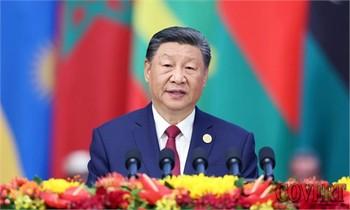
China is creating a new form of modernity
Martin Jacques
Modernization has become one of the great subjects of discussion in China. Ever since the century of humiliation, the quest for modernization had eluded China. By the time of the revolution in 1949, China lagged hugely behind the West. The need to modernize was China’s greatest challenge. In the late 1970s, Deng Xiaoping learned from the Asian tigers and the West. His answer was to open up to the rest of the world, most notably the West.

China was still very dependent on Western technology. However, from 2010, China became increasingly innovative in its own right, with the emergence of companies like Huawei and Tencent, which are now leaders in global technology. China was emerging as a global technological leader.
The US did not believe it was possible. Some would still argue that China was a copier, incapable of invention and innovation. In a speech in 2014, Joe Biden, then US vice president, said, “I challenge you. Name me one innovative project; one innovative change; one innovative product that has come out of China.”
In 2015, the Chinese government published “Made in China 2025,” which listed the 10 high-tech industries that should become world leaders in a decade. Western governments and leading Western companies did not take the program seriously. In 2024, China’s EVs are already recognized as global leaders, with BYD already becoming number one in the world.
China’s economic and technological transformation was one of the main reasons why America turned from friend to foe in less than a decade between 2009 and 2017. The US feared that, as a result of its economic and technological transformation, China would challenge US global hegemony. Historically, modernization has enabled countries to exercise huge power for good or ill. Europe is a case in point. It was only after the Second World War when the developing world started to modernize.
This brings us to the global significance of China’s modernization. Ever since 1945, China has considered itself to be part of the developing world. The most important example is the Belt and Road Initiative (BRI). The purpose of the BRI is to assist the economic development of developing countries in Eurasia, Africa and Latin America. Another example is BRICS. In 2018, the BRICS countries overtook the G7 countries share of global GDP measured by purchasing power parity (PPP). At present, BRICS accounts for 35 percent of the world’s GDP, compared to 30 percent by the G7 countries.
Will Chinese modernity be different from American modernity? The US was a product of European migration and the near elimination of the native population, and was only founded in 1776. China is rooted in a civilization dating back more than 5,000 years and its population is four times larger than US. China is shaped by Confucian values, which are rooted in social relations, while the US is the home of individualism. Chinese and American modernity will look very different.
Let’s consider a number of examples. The US will continue to rely on the market for its innovations. In contrast, as the Third Plenum showed last month, the Chinese government will continue to play the crucial role in charting the future of the economy. Firms like Meta and Google have been subject to little or no regulation, be it in respect of monopoly behavior, the exposure of young users to online bullying and sexual abuse, or their addiction to smartphones. China, in contrast, has introduced a range of controls. For example Tencent and ByteDance are required to implement controls to address excessive use by minors and anti-social content. We should not expect the two countries to converge. In the longer run I expect Chinese modernity to exercise more global influence than the US, as China’s development outpaces that of the US. China is inventing new and superior forms of production: China’s EVs are a classic example.
The Third Plenum demonstrated its clear commitment to hasten and deepen the process of modernization by laying central emphasis on the development of “new quality productive forces” and creating a “high-standard socialist market economy.” China is in the process of creating a new form of modernity.
The writer is a visiting professor at the Institute of Modern International Relations at Tsinghua University and a senior fellow at the China Institute, Fudan University
